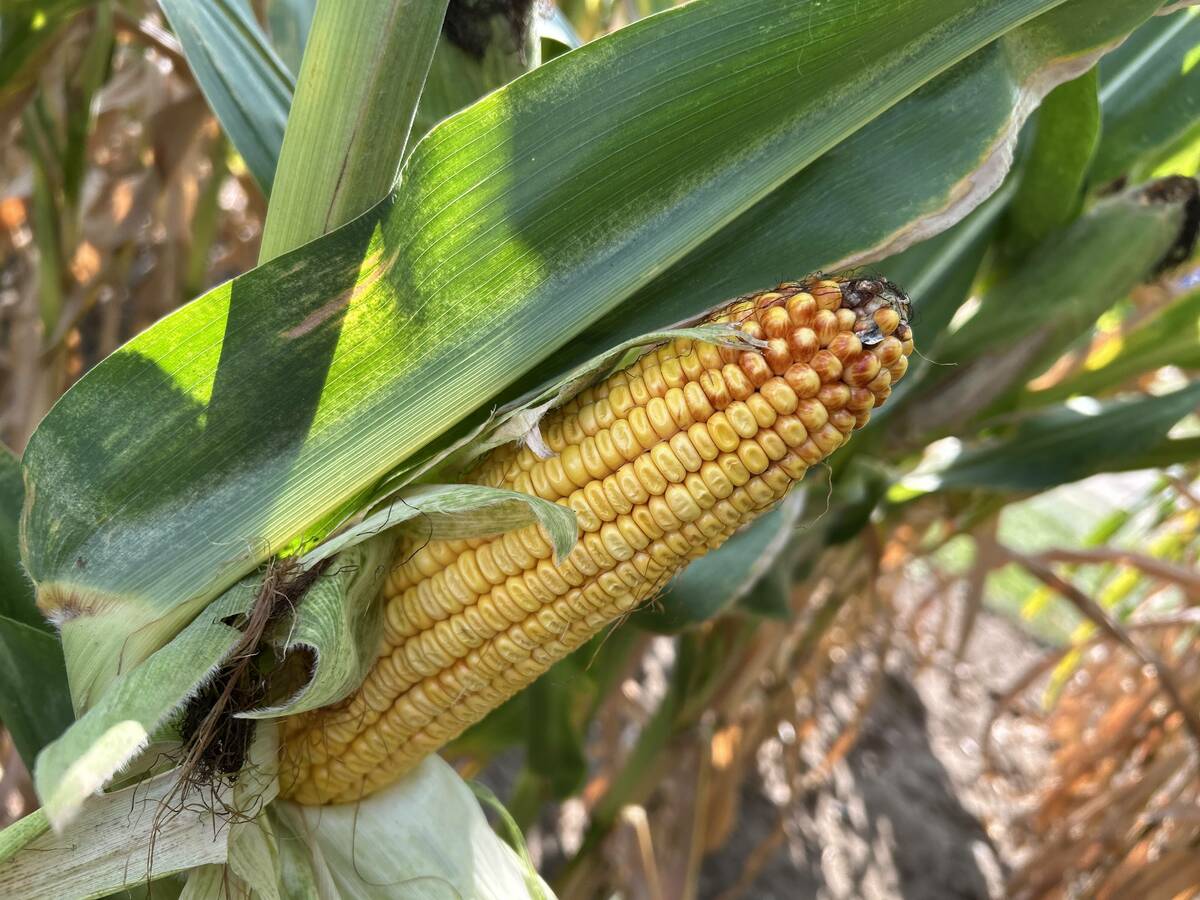The guns have been blazing in Saskatchewan as farmers pull the trigger on 2006 oats prices that offer little better than break even values.
But in Manitoba, farmers and processors are still facing each other down, waiting for the other to blink.
“Nobody’s contracting, neither the buyers nor the sellers of oats,” said Real Tetrault, president of Emerson Milling.
“It’s a real standoff and we’re going to see who’s right.”
Buyers are offering prices for 2006 oats that are far below current 2005 prices. In Saskatchewan, farmers can sell the oats in their bins for about $1.90 per bushel, but oats delivered next October and November are fetching bids of only about $1.60, although there are reports of bids as low as $1.50.
Read Also

Crop estimates show mixed results
Model-based estimates used by Statistics Canada showed the 2025/26 crop year has seen increases in canola, corn for grain, oats and lentils production while seeing dips in spring wheat, durum wheat, soybeans and barley in comparison to 2024/25.
Saskatchewan farmers, faced with few better-looking prospects for the coming year, have been willing to lock in those prices, even though they offer little chance of profit, said Jack Shymko, a Prairie Oat Growers Association director in Ituna, Sask.
“When I was up at the Crop Pro-duction Show in Saskatoon, farmers were falling over themselves to sign up for $1.65 a bu.,” he said.
“I just didn’t understand that. Unless you’re going to get 100 bu. an acre, you’re not making money at those levels. Why do you want to target a money-losing proposition right off the bat?”
That’s an understandable feeling, but one that farmers shouldn’t too easily embrace, said oat market analyst Randy Strychar of Ag Commodity Research.
Refusing to sign up oats at $1.60 per bu. in Saskatchewan might come back to haunt a farmer.
And a decision today to not seed oats this spring is unlikely to survive the March penciling-out of relative returns.
“If a farmer says to me he’s not going to grow new crop because it’s 40 cents less than what he’s getting today, I’m not surprised,” Strychar said.
“But if he says he’s not going to grow oats because $1.60 is not a good value, I don’t know. A buck sixty is pretty good value for Saskatchewan right now.”
That’s because the 2006 oat crop could be a monster, crushing the market. Agriculture Canada forecasts that farmers will plant 15 percent more acres to oats this spring than they did last spring, and that was a big acreage.
Ag Commodity Research predicts that oat acreage will increase by only five percent, but an average yield on that acreage will hammer down prices.
Strychar said buyers at this time last year were bidding $1.60 for new crop 2005 oats, a price that fell short of the cash price a few months later after the Manitoba crop failed and the market rallied.
But if that crop had yielded average for its acreage, Chicago Board of Trade prices could have plummeted to $1.10 per bu.
And that’s a risk again, if farmers follow their traditional pattern of growing the crop that made them the most money last year.
“They always look back at what they got,” Strychar said.
Relative return calculations for Saskatchewan show oats as the third best crop alternative, topped only by malting barley and wheat.
With oats in the top-three for 2006, acreage is unlikely to shrink.
Regardless of whether farmers today want to seed oats this spring, these calculations will probably lead to the five to 15 percent acreage growth forecasters expect.
“What else are you going to grow to make a better dollar, a better return?” said Strychar.
Tetrault said many farmers in Manitoba’s Red River Valley were wiped out two years in a row by crop failures, so they now are wary about signing contracts with buyers who expect delivery.
“They’re gun shy,” he said.
“There were big cheques being written around here to the elevator for $50,000 or $100,000 for a guy to get out of his contract.”
Tetrault said farmers want to see a price of $2 per bu. offered before they’ll commit to oats, but that is unlikely.
“That’s just not there on the Chicago Board of Trade,” he said.
Strychar said recent crop problems, such as drought and flooding, have led to a number of years of good returns for oats. However, the price that farmers have become accustomed to won’t survive the return of normal weather.
“Now, $2 has become the magic number,” Strychar said about the price at which farmers will lock in large acreages.
“In the 1990s, for $1.60 in Manitoba they would have grown oats all day.”
Shymko said he will grow oats this spring but because he is unwilling to accept current new crop bids, he’ll take a chance on the market.
He knows it’s a risky bet: almost everyone expects acreage to increase.
“If you talk to the seed growers, if there’s anything they’re cleaning (for seed) it’s oats,” Shymko said.
“There’s going to be a lot of oats going into the ground.”















